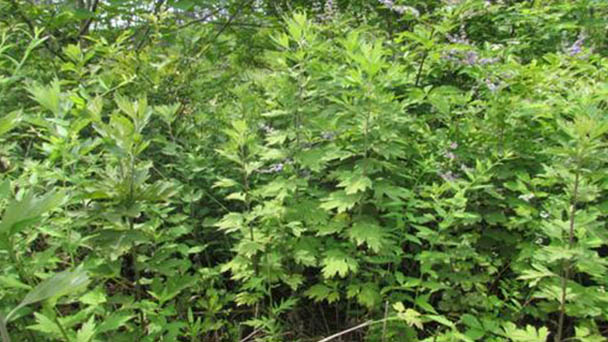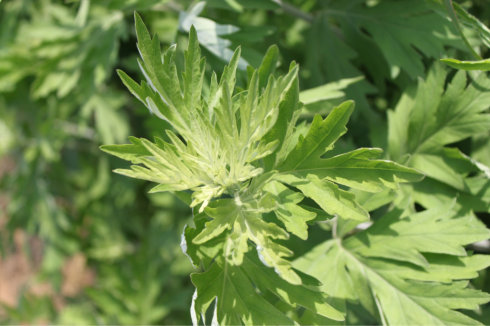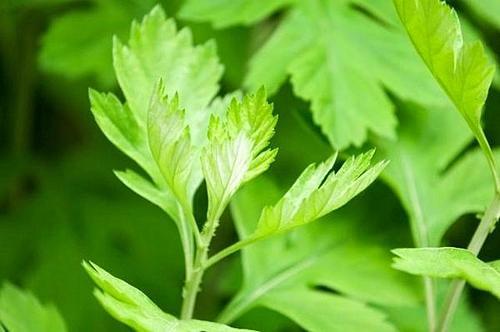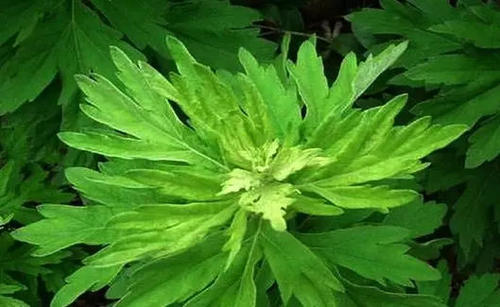How to Grow and Care for Artemisia argyi
Written by Maggie
Oct 30 2021

Artemisia argyi is very common in our normal life. But do you know how to grow and care for Artemisia argyi? Let's learn together!

How to Grow Artemisia argyi
1. Select and prepare the land
Artemisia argyi is extremely easy to reproduce and grow. The adaptability to the climate and soil is strong, cold and drought resistant, the edge of the field, the ground, hillside, wasteland can be selected for planting. Artemisia argyi's adaptability is strong, in order to save the land resources, should choose the hills and other reasonable layout; The base shall have irrigation water conditions, and there shall be no residential water or industrial water pollution nearby. The soil and air quality of the base shall meet the second national standard, the water used for production shall meet the water quality standard for farmland irrigation, and the soil shall be free from toxic and harmful drug residues, human and animal excrement and household garbage, and shall be tested regularly according to the regulations. The neutral soil with deep soil layer, good soil permeability and rich organic matter is preferred. According to the structural characteristics of the planting soil layer, the number of ploughing and harrowing should be properly mastered. Combined with the soil preparation and application, 22.5~30.0t/hm2 of soil fertilizer, which was fully decomposed to achieve pollution-free soil, was evenly mixed and turned into the soil layer, and then ditches were built to be used for planting.
2. Propagation methods
Artemisia argyi's propagation methods included seed propagation, rhizome propagation, and splinter propagation. Seed germination rate is low, only 5%, and the seedling period is long (2 years), generally not used; Rhizome reproduction, high survival rate, but long seedling period (2 months); It is the best for plant division propagation, with a high survival rate and no seedling growth period, and a fast propagation speed, so it is generally adopted. To select good seed, the artemisia argyi leaves should be thick and large, the stems stout and erect, the leaves should be dark green, the smell rich, the roots of the seedlings should be well developed.
3. Planting Density
In 2-3 months, the seedling height was 5~10cm. When the ground was wet (preferably after rain or cloudy days), the seedlings separated from the stem base of the artemisia argyi parent plant were planted according to the row spacing 30cm×40cm, 2~3 plants were planted in each hole, and the soil was compacted. If there is no rain within 2~3d after planting, keep water dripping.150 plants /m2 were planted, and the average yield of dried artemisia argyi per plant was 4g, and the yield of dried artemisia argyi per plant was about 5250kg/hm2.
4. Till the field
In early April, interflow weeding was done once with a depth of 15cm. Artemisia argyi in the early mid-june after the collection turned the sun garden, removed the residual branches and leaves, thin over dense stem base and roots, the depth of 15cm.
5. Fertilizer Application
After successful planting, 90kg/hm2 urea was applied when the artemisia argyi seedling height was 30cm as seedling extraction fertilizer, and it was spread on rainy days and sprayed on the leaves on sunny days. In early November, it was applied to farmyard manure, barnyard manure and cake manure as base fertilizer.
6. Watering
Car surface into turtle back shape, so that the drain unobstructed. In the dry season, sprinkling irrigation was applied on the leaf surface below the seedling height of 80cm, and the whole garden was irrigated when the artemisia argyi seedling height was above 80cm.

How to Care for Artemisia argyi
1. Soil
Artemisia argyi can adapt to the soil very well, but to grow better, it's best to use fertile, permeable soil.
2. Water
Make sure the soil is slightly moist at ordinary times, and water the right amount, not too much or too little, and not too often. If you can't control the watering time, you can look at the soil before watering. If it is very dry, water artemisia argyi in time. If it is in a moist state you do not need to water again.
3. Illumination
Artemisia argyi needs plenty of light, which is better for its growth, but it needs to be nurtured at home and shaded when the sun is strong in the summer.
4. Fertilization
Before sowing to apply base fertilizer, each harvest to apply fertilizer, topdressing the right amount. It is best to use human and animal manure that has been decomposed, and can also be appropriate to apply some phosphate fertilizer and potash fertilizer for artemisia argyi.
5. Pest control
Artemisia argyi's common pests are aphids, scale insects and starscream. Once pests appear, they will affect its growth and damage its leaves and branches.
You can use Artemisia argyi's roots and seeds to reproduce. It's best to apply sufficient basal fertilizer before sowing and avoid water accumulation during watering to avoid diseases.

Latest Updated
- Benefits of Bugleweed - 7 Science-backed Health Benefits
- Bugleweed Dangers & Side Effects - Is It Poisonous?
- How to Plant Evergreen Trees - What You Should Know
- When to Plant Evergreens - Grow Guide for Evergreen Trees
- 12 Wonderful Evergreen Shrubs for Your Garden
- 12 Popular Evergreen Plants with Pictures for Beginners
- When And How To Prune A Lilac Bush Like a Pro
- How to Grow & Care for Lilac Vine (Hardenbergia Violacea)
- Japanese Lilac Tree (Syringa Reticulata) Care & Propagation Guide
- Shumard Oak Pros and Cons - What to Know
Popular Articles
- Winter maintenance of Antirrhinum Majus
- How to Grow Terminalia Mantaly Tree
- How to Grow and Care for Crossostephium Chinense
- How to grow Antirrhinum Majus in spring
- Peristeria Elata (Dove Orchid) Profile: Info & Care Guide
- Underwatered Snake Plant (Sansevieria Trifasciata) - Signs And How To Fix
- How to Care for Brazilian Jasmine Plant (Mandevilla Sanderi)
- How to Grow & Care for Graptopetalum Purple Delight in Summer
- Rosa Chinensis (China Rose): Plant Growing & Care Tips
- How to Care for Baby Sun Rose (Aptenia Cordifolia)